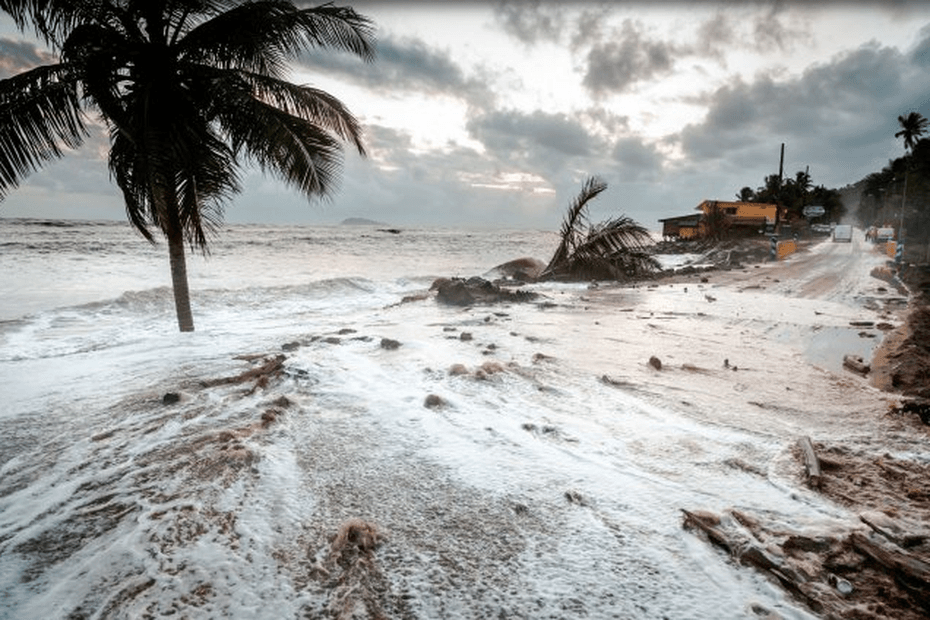« The West Indies are among the islands most threatened » by marine submersion and by 2040, certain areas of Guadeloupe and Martinique could become uninhabitable, warns Virginie Duvat, professor of geography at the University of La Rochelle, interviewed by the AFP.
Professor of geography at the University of La Rochelle, Virginie Duvat participated in the drafting of the report of the Intergovernmental Panel on Climate Change (IPCC) and is leading a field study with her team. Their object: « dNature-based solutions to erosion projects« to thwart the impacts of climate change, particularly in the West Indies.
What will be the impact of climate change on our tropical islands?
Virginia Duvat: The impacts will be multiple. First, the cyclones will be more intense. The islands will experience peaks of destruction, as in 2017 in Saint-Martin. Coastal erosion will question the use of coastlines, which are home to residential areas, tourist activities and infrastructure, such as riprap.
As far as marine flooding is concerned, the West Indies are among the most threatened islands.
With the rise in sea level, which now cannot be stopped, and as with the phenomenon of erosion, we will experience episodes of submersion like those at the end of April in Guadeloupe, in the event of rain and high tide combined. . There, the port, industrial, commercial and residential area that goes from Pointe-à-Pitre to Jarry is threatened by chronic flooding. From 2030, this will disrupt the activities of certain sectors. If we continue on the current trajectory of global warming, between 2060 and 2080, we will go up to 180 days per year of submersion.
How to act and adapt?
What is at stake is the ability to put climate change adaptation plans in place now. We work here, with my research laboratory, on projects of solutions to erosion based on nature, on ecosystems to mitigate the impact of climate change. But it must be understood that replanting corals, restoring the mangroves, etc… will not be enough if we do not stop polluting. The problem of waste and sanitation must be solved: at the large seaport, the replanted corals are dying because of human pressure. This also raises the question of the means that public actors, in particular the State, are ready to put into adapting to climate change, and this is not up to the challenge. The Overseas Territories should also strengthen their regional integration and show solidarity with the efforts made by the small island States, which have succeeded in weighing in on the international level. But unless the States of this world decide to drastically reduce their greenhouse gas emissions, this will not be enough.
What about the maintenance of populations on these island territories?
In the last report of the IPCC, we conducted a reflection to find out if these islands or parts could become uninhabitable. And the answer is yes, some parts will. Some areas will be submerged. In other places, we will run out of water and unless we know how to desalinate seawater, the territories will lose a vital resource. From 2040, the public authorities will have to set up relocations, the movement of people or activities in safe areas, as is the case in Petit-Bourg. Which on an island poses many problems: availability of land, natural or agricultural spaces, but also the stacking of risks. We cannot dislodge people (because of) the risk of submersion to throw them into the risk of landslide. A collapse of local food resources is also expected. Agriculture will face challenges, including recovering from intense cyclones. The declining coral reefs, coastal fishing will no longer be possible. We will have to adapt with climate-compatible practices for everything, all the time, and we have to anticipate it now ».
